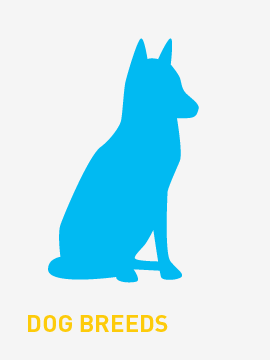The Turkish Angora ('Ankara cat') is a breed of domestic cat. Turkish Angoras are one of the ancient, natural breeds of cat, having originated in central Turkey, in the Ankara region (historically known as Angora). The breed has been documented as early as the 1600s and is believed to be the origin of the mutations for both the coloration white (the dominant white gene is in truth the absence of color) and long hair. The breed is also sometimes referred to as simply the Angora or Ankara cat.
History
Like all domestic cats, Turkish Angoras descended from the Felis silvestris lybica (Felis silvestris lybica). The Fertile Crescent was a place where cats were first domesticated. Cats from eastern mountainous regions of early Anatolia and through inbreeding and natural selection, developed into longhaired breeds like the Turkish Van and the Turkish Angora.Longhaired cats were imported to Early Modern Britain and France from Asia Minor, Iran and Russia as early as the late 16th century, though there are indications that they appeared in Europe as early as the 14th century due to the Crusades . The Turkish Angora was used, almost to the point of extinction, to improve the coat on the Persian (cat). The Turkish Angora was recognized as a distinct breed in Europe by the 17th century.Angoras and Persian (cat) seem connected. The Persian cat was developed from Turkish angora mutations by British and American cat fanciers. Although some cat associations think the Persian cat is a natural breed, in the 19th century Persians and Angoras were identical. In 1903, F. Simpson wrote in her book The Book Of The Cat:
"In classing all long-haired cats as Persians I may be wrong, but the distinctions, apparently with hardly any difference, between Angoras and Persians are of so fine a nature that I must be pardoned if I ignore the class of cat commonly called Angora, which seems gradually to have disappeared from our midst. Certainly, at our large shows there is no special classification given for Angoras, and in response to many inquiries from animal fanciers I have never been able to obtain any definite information as to the difference between a Persian and an Angora cat."
The Angora of the 20th century was used for improvement in the Persian coat, but the type has always been vastly divergent from the Persian – particularly as the increasingly flat-faced show cat Persian has been developed in the last few decades.In the early 20th century, the Ankara Zoo, began a meticulous breeding program to protect and preserve what they considered a national treasure: pure white Turkish Angoras. The zoo particularly prized odd-eyed cat Angoras (i.e., Turkish Angoras with one blue eye and one amber eye), however the cats were chosen only by their color (white)—no other criterion was used. Despite the lack of selective breeding and no consideration given for the deafness problem, Ankara Zoo cats have a very similar type.The Turkish Angora, which was brought to Canada in 1963, was accepted as a championship pedigreed breed in 1973 by the Cat Fanciers' Association. However, until 1978 only white Angoras were recognized. Today, all North American registries accept the Turkish Angora in many colors and patterns. While numbers are still relatively small, the gene pool and base of fanciers are growing."Breeders in Turkey feel that the cat fancy’s fine-boned version of their national breed is unrepresentative of the true Turkish cats, which are much sturdier. American “Turkish” Angoras may have only a minimal remnant of the original Ankara Zoo DNA and are only “purebred on paper".
In popular culture
- The James Bond villain Ernst Stavro Blofeld has a white Angora cat.
- In the film The Crow (film) the cat (named Gabriel) that is owned by Eric Draven played by Brandon Lee is a white Angora
- Duchess (voiced by Eva Gabor), the mother of three kittens and main protagonist of The Aristocats, looks like a Turkish Angora, as does her daughter Marie.
- Mewsette (voiced by Judy Garland), the protagonist of the 1962 film Gay Purr-ee, is a Turkish Angora.
- In SWAT Kats: The Radical Squadron, the character Ann Gora's name is a pun on the breed's name.
- Felicity, a character in the Felidae (novel) and Felidae (film) Felidae, was a Turkish Angora.
- Sonja, Heathcliff's girlfriend from the Heathcliff (comic strip) by George Gately and both the Heathcliff (1980 TV series) and Heathcliff (1984 TV series) televised cartoon series, appears to be one.
- Pretty Kitty, a cat from the Bad Kitty (series) series, is a well-groomed Turkish Angora.
- Sawyer (voiced by Jasmine Guy), the love interest of the 1997 film Cats Don't Dance.
- Miss Kitty (voiced by Amy Irving), one of the characters in An American Tail: Fievel Goes West.
- MidnightBSD is named after programmers' Angora.











